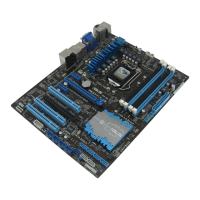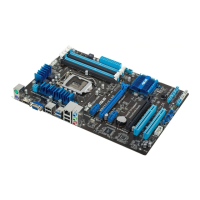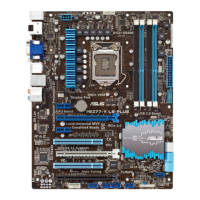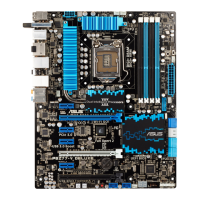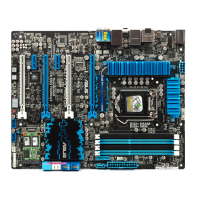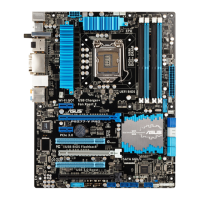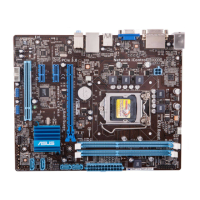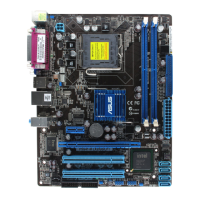Do you have a question about the Asus P8Z77-V LX2 and is the answer not in the manual?
| ECC | No |
|---|---|
| Non-ECC | Yes |
| Memory channels | Dual-channel |
| Memory slots type | DIMM |
| Number of memory slots | 4 |
| Supported memory types | DDR3-SDRAM |
| Maximum internal memory | 32 GB |
| Supported memory clock speeds | 1066, 1333, 1600, 1866, 2000, 2133, 2200, 2400 MHz |
| System bus rate | 5 GT/s |
| Processor socket | LGA 1155 (Socket H2) |
| Processor manufacturer | Intel |
| Compatible processor series | Intel Core i3, Intel Core i5, Intel Core i7 |
| Maximum number of SMP processors | 1 |
| USB 2.0 connectors | 2 |
| Number of SATA connectors | 6 |
| Number of Parallel ATA connectors | 0 |
| Special features | 2 x Thunderbolt |
| HDMI version | 1.4a |
| Headphone outputs | 3 |
| USB 2.0 ports quantity | USB 2.0 ports have a data transmission speed of 480 Mbps, and are backwards compatible with USB 1.1 ports. You can connect all kinds of peripheral devices to them. |
| Audio chip | Realtek ALC887 |
| Cooling type | Passive |
| Component for | PC |
| Motherboard chipset | Intel Z77 |
| PC health monitoring | CPU, FAN, Temperature |
| Audio output channels | 7.1 channels |
| Motherboard form factor | ATX |
| Compatible operating systems | Windows 7, Vista, XP 32/64-bit |
| RAID levels | 0, 1, 5, 10 |
| Supported storage drive interfaces | SATA, SATA II, SATA III |
| Graphics card | HD Graphics |
| OpenGL version | 3.2 |
| DirectX version | 11 |
| Maximum resolution | 2560 x 1600 pixels |
| Maximum graphics card memory | 1760 MB |
| Parallel processing technology support | 2-Way CrossFireX, Quad-GPU CrossFireX |
| PCI Express slots version | 2.0, 3.0 |
| PCI Express configurations | 1x4, 1x16 |
| Cables included | SATA |
| LAN controller | Realtek RTL8111F |
| Networking features | Gigabit LAN |
| Ethernet interface type | Fast Ethernet, Gigabit Ethernet |
| BIOS type | EFI AMI |
| ACPI version | 2.0a |
| BIOS memory size | 64 Mbit |
| Depth | 213 mm |
|---|---|
| Width | 305 mm |


